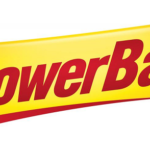Prime intensity is the ideal amount of physiological activity necessary for you to perform your best. It is also the level of intensity that you perceive as most positive and beneficial to your sports performances. Unfortunately, there is no one ideal level of intensity for every athlete. Prime intensity is individual; it’s different for everyone. Some athletes perform best relaxed. Others perform best energized, but not too psyched up. Still others perform best unbelievably intense and fired up. You must find out the level of intensity that enables you to perform your best.
What sport you participate in also plays a role in determining your prime intensity. Though there will be some variation in intensity within a sport, different sports require different levels of intensity. For example, golf demands a low level of intensity because it involves precise motor skills. In contrast, football linemen need high intensity because their position involves strength and explosiveness. Other sports, such as tennis, soccer, and basketball, need more moderate intensity because they combine speed, power, and skill.
Your intensity is much like the thermostat maintaining the most comfortable temperature in your house. You always notice when your house is too warm or too cold because you’re sensitive to changes in temperature. When the temperature becomes uncomfortable, you adjust the thermostat to a more comfortable level. You can think of your intensity as your internal temperature that needs to be adjusted periodically. You need to be sensitive to when your intensity is no longer comfortable, in other words, it’s not allowing you to perform your best. You can then use the intensity-control techniques I’ll be describing in my March, 2010 newsletter to you to raise or lower your intensity to its prime level.
You have several goals in developing prime intensity. First, to learn what is your prime intensity. Then, to recognize the signs of overintensity and underintensity in practice and competitions. Next, to identify those situations in which your intensity may go up or down. Finally, to take active steps to reach and maintain prime intensity throughout practice and competitions (the last goal will be addressed in my next newsletter).
Determining Prime Intensity
The first step in taking control of your intensity is to identify what is your prime intensity. First, think back to several competitions in which you performed very well. Recall your level of intensity. Were you relaxed, energized, or really fired up? Then remember the thoughts, emotions, and physical feelings you experienced during these competitions. Were you positive or negative, happy or angry, relaxed or tense? Second, think back to several competitions in which you performed poorly. Recall your level of intensity. Remember the thoughts, emotions, and physical feelings you had in these competitions. If you’re like most athletes, a distinct pattern will emerge. When you perform well, you have a particular level of intensity. This is your prime intensity. There are also common thoughts, emotions, and physical feelings associated with your prime intensity and performing well. In contrast, when you’re performing poorly, there is a very different level of intensity, either higher or lower than your prime intensity. There are also decidedly different thoughts, emotions, and physical feelings.
Another useful way to help you understand your prime intensity is to experiment with different levels of intensity in practice and see how the differing intensity impacts your performances. Here is a good exercise you can use to learn more about your prime intensity (you can adapt it to your particular sport):
Let’s say you’re working on a drill to improve some aspect of your performance. Break up the drill into three segments. The first segment will emphasize low intensity. Before you begin the drill, take several slow, deep breaths, relax your muscles, and focus on calming thoughts (e.g., “Easy does it,” “Cool and calm.”). As you start the drill, stay focused on keeping your body relaxed and calm.
The second segment will focus on moderate intensity. Before the drill, take a few deep, but more forced breaths, walk around a bit, and focus on more energetic thoughts (e.g., “Let’s go,” “Pick it up.”). Before the drill, bounce on your feet lightly and feel your intensity picking up. During the drill, pay attention to feeling the intensity and energy in your body and keeping your body moving.
The final segment will highlight high intensity. Before the drill, take several shorter, more intense breaths with special emphasis on a hard and aggressive exhale, start bouncing up and down immediately, and repeat intense thoughts (e.g., “Fire it up,” “Get after it.”), saying these out loud with energy and force. Feel the high level of intensity and energy as you begin the drill, and focus on maintaining the intensity with constant movement and high-energy self-talk.
I encourage you to use this exercise for several days so you can see clearly how your intensity impacts your performance. As with comparing past good and poor performances, you will likely see a pattern emerge in which you perform better at one of the three levels of intensity. That level of intensity is the one you want to aim for in both practice and competition.
With this knowledge, you will have a good sense of your prime intensity. You can then use that information to recognize when you’re not at prime intensity and you need to adjust your intensity to a prime level.






